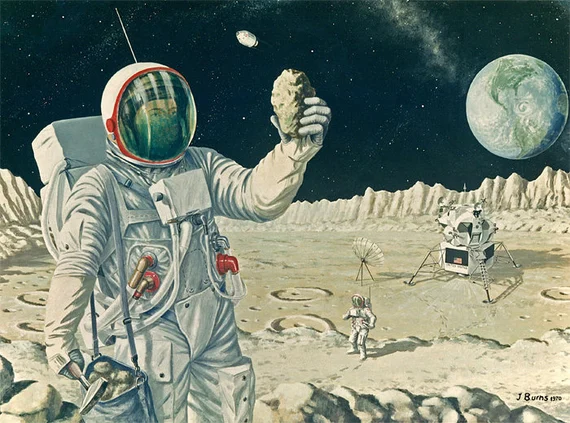What Would Happen If We Got Stuck on the Moon?

Imagine this: you’ve just touched down on the Moon, marveling at its stark, serene landscape, when suddenly, something goes awry. Maybe your spacecraft encounters a critical malfunction, or an unexpected system failure leaves you stranded. The excitement of lunar exploration quickly turns to a daunting reality as you realize that you’re now in a precarious situation far from Earth’s comforting embrace.
Being stuck on the Moon presents a unique and perilous set of challenges, unlike anything faced in the more familiar environments of Earth or even Mars. With no atmosphere to speak of, extreme temperatures, and the harsh reality of isolation, the Moon is a hostile environment where every moment counts.
The lack of breathable air, limited resources, and the need to deal with equipment failures in an environment where even basic tasks become more complex could test even the most prepared astronaut to their limits.
In this scenario, every decision becomes critical, and the stakes are as high as they get. From managing dwindling supplies and braving temperature extremes to navigating the delays in communication with Earth and dealing with the absence of a reliable surface to land on, the challenges are enormous.
Let’s explore the full scope of what happens if we find ourselves in such a dire situation on the Moon, and why overcoming these challenges would require both exceptional preparation and a fair amount of ingenuity.

Getting stuck on the Moon is a scenario fraught with challenges and dangers, far beyond the typical space mission issues. Here’s a detailed breakdown of what could happen in such a situation and why it would be so critical.
1. Limited Resources 
-
Oxygen Supply: The Moon has no atmosphere, so astronauts must rely on their spacecraft’s life support system for oxygen. Modern lunar landers and spacesuits are equipped with systems to recycle air, but these systems are finite. If you’re stuck, the available oxygen supply could dwindle rapidly, especially if there are issues with the life support system. In an emergency, rationing the oxygen and using any backup systems or reserves would become crucial to extending survival.
-
Water and Food: Water is essential for hydration and other life-support functions. On the Moon, water has to be transported from Earth or extracted from lunar ice deposits, which requires advanced technology. If stranded, you’d need to manage your water supply carefully, using any recycling systems to maximize efficiency. Similarly, food supplies would be limited and carefully planned. Space missions usually carry pre-packaged meals, but any interruption in resupply could lead to severe shortages.
2. Extreme Temperatures 
-
Day and Night Cycles: The Moon experiences severe temperature fluctuations between day and night. During the lunar day, temperatures can reach around 127°C (260°F), which can cause overheating of equipment and discomfort or danger to astronauts if not properly managed. During the lunar night, temperatures drop to about -173°C (-280°F), which can freeze equipment and make conditions hazardous. Proper thermal insulation and management are crucial to maintaining operational equipment and ensuring astronaut safety.
-
Thermal Protection: Spacesuits and spacecraft are designed with insulation and thermal control systems to handle these extremes. However, if stuck for an extended period, the effectiveness of these systems might be challenged. Continuous exposure to such extreme temperatures could cause wear and tear, potentially leading to failures in life-support systems or equipment malfunction.
3. Communication Issues 
-
Delay in Communication: The average communication delay between Earth and the Moon is approximately 1.28 seconds each way. While this may seem minimal, in a critical situation where immediate feedback is needed, even a small delay can impact decision-making. Coordinating emergency responses, troubleshooting issues, or receiving real-time guidance could become more complicated due to this delay.
-
Isolation: Being isolated on the Moon means you have limited immediate support. If communication systems fail or are compromised, the ability to get assistance or relay critical information is severely hampered. Mission control would need to rely on pre-established protocols and contingency plans, while astronauts would have to rely on their training and available resources to manage the situation.
4. Lunar Gravity 
-
Reduced Gravity: The Moon’s gravity is about 1/6th that of Earth’s, which affects everything from movement to handling equipment. While reduced gravity makes it easier to move around and lift objects, it can also complicate tasks that involve precision and coordination. For instance, repairing equipment or conducting scientific experiments may require adjustments in techniques and tools.
-
Equipment Handling: Tools and equipment designed for use on Earth need to be adapted for the Moon’s low-gravity environment. Any malfunctions or breakdowns in equipment would need to be addressed with limited resources and in a challenging setting. Special training and preparation would be necessary to handle these issues effectively.
5. Radiation Exposure 
-
Cosmic Radiation: The Moon has no atmosphere or magnetic field to shield against cosmic radiation, which consists of high-energy particles from the Sun and other cosmic sources. Prolonged exposure to this radiation can increase the risk of radiation sickness, cancer, and other health issues. Astronauts would need to use radiation shielding in their habitat and manage their time outside to minimize exposure.
-
Solar Radiation: The Moon is also exposed to solar radiation, including intense bursts of radiation from solar flares. Without atmospheric protection, these solar storms can pose additional risks. Spacecraft and spacesuits must be designed to shield against these radiation hazards, and astronauts would need to monitor solar activity and seek shelter during high-radiation periods.
6. Potential for Rescue 
-
Rescue Missions: A rescue mission to the Moon would require a spacecraft capable of landing, taking off, and safely transporting astronauts back to Earth. The complexity and cost of such a mission are significant, requiring precise coordination and planning. A successful rescue would depend on the availability of a suitable spacecraft and the readiness of the mission control team to manage the operation.
-
Self-Rescue: If feasible, astronauts might attempt a self-rescue by making repairs to their spacecraft, conserving resources, and using emergency supplies to extend their survival. This would require ingenuity, technical expertise, and the ability to adapt to the lunar environment, all while dealing with the psychological stress of isolation and the harsh lunar conditions.
Getting stuck on the Moon is a complex and dangerous situation that involves managing limited resources, extreme temperatures, communication delays, low gravity, radiation exposure, and potential rescue operations.
The Moon’s harsh environment and lack of immediate support make such an event a serious challenge. Preparedness, advanced technology, and effective contingency planning are essential to addressing these risks and ensuring the safety of lunar missions.










2 comments